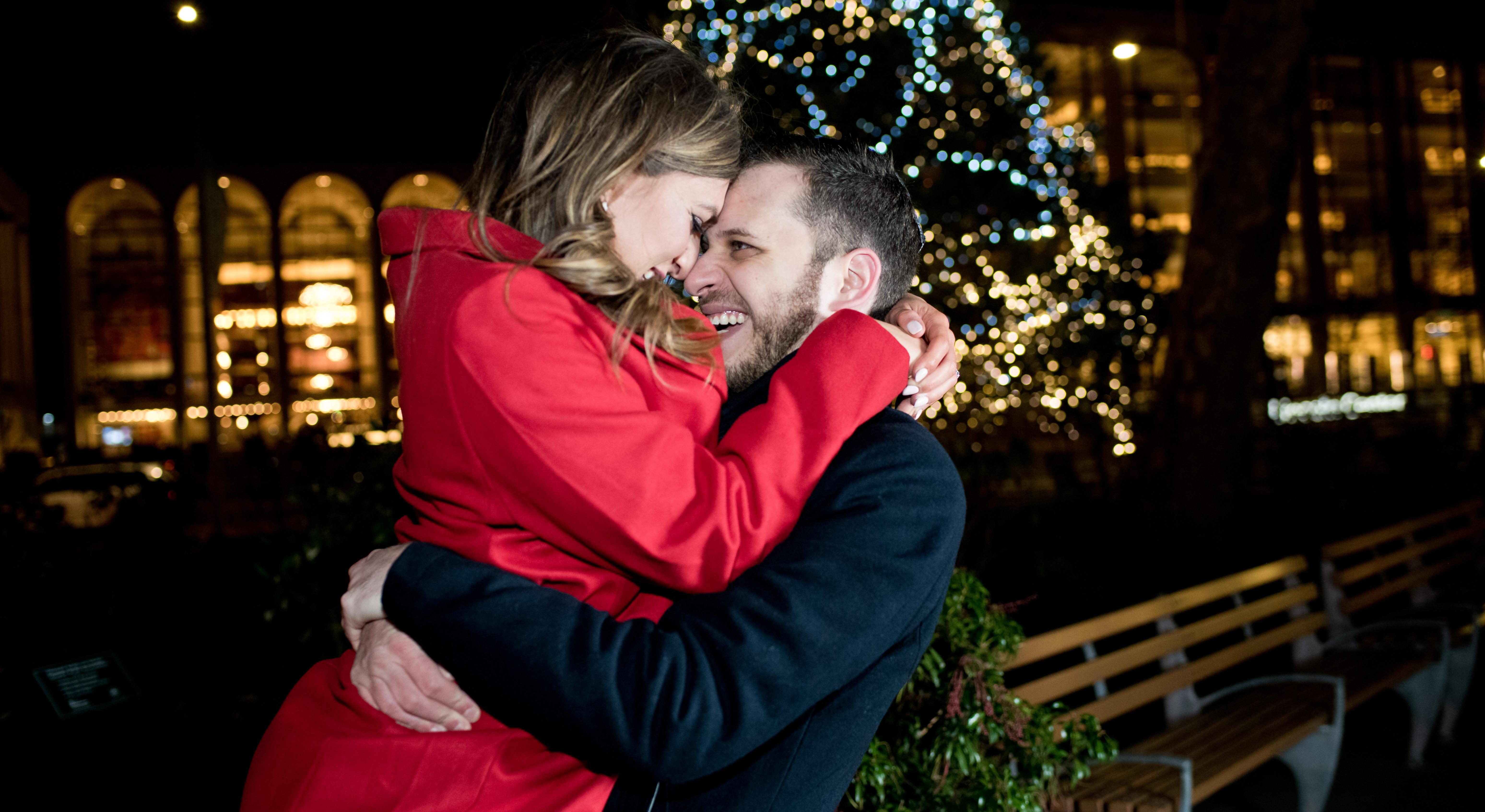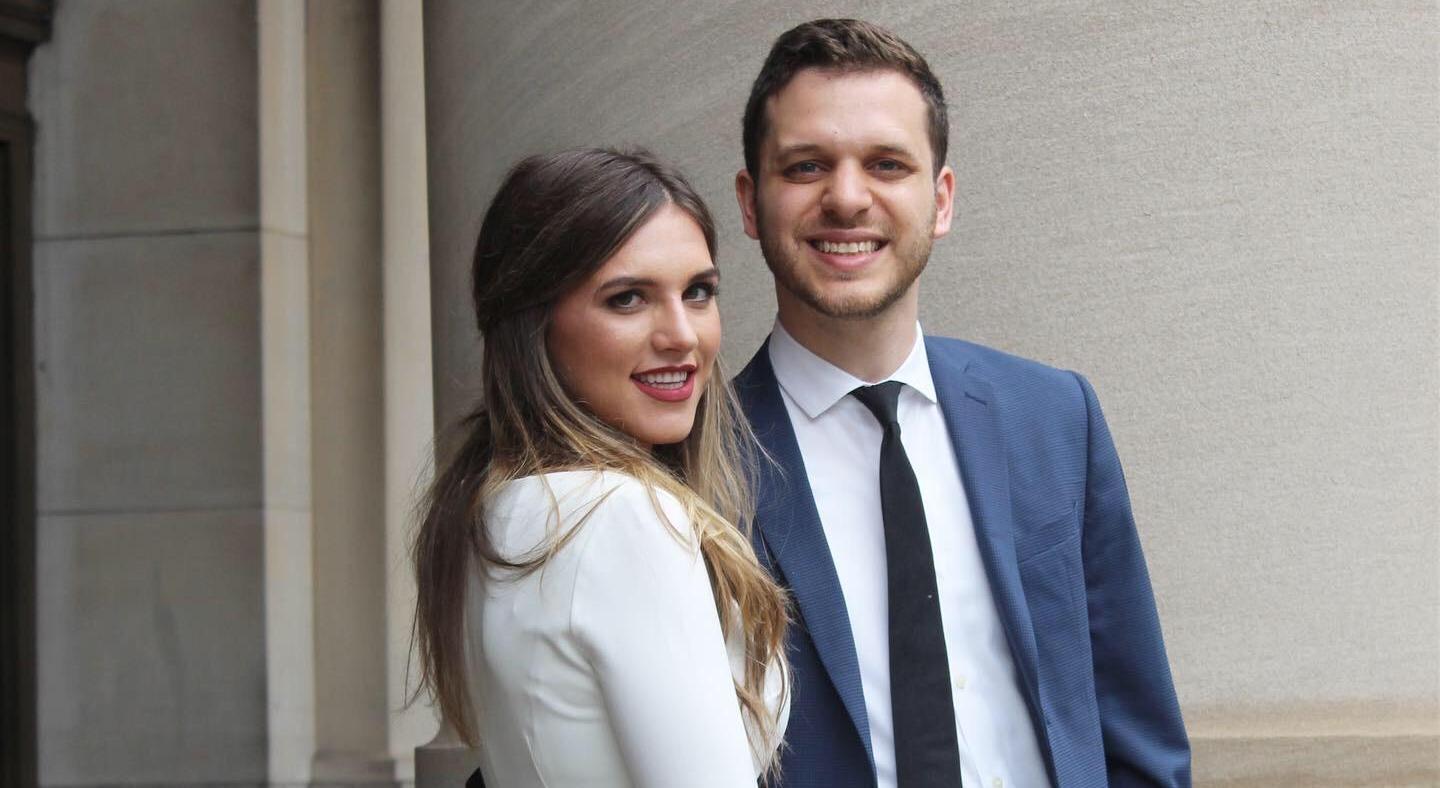Hadassa & Aaron

Aaron
Adler
Hadassa
Holzapfel-Adler
May 2, 2021
A Guide to Jewish Weddings
Thank you for joining us on our very special day. We know that traditional Jewish weddings may be new to some of you, so we put together this guide to help explain the ceremony and customs! A traditional Jewish wedding is full of meaningful rituals, symbolizing the beauty of the relationship of husband and wife, as well their obligations to each other and to the Jewish people. A wedding reflects a new beginning for the couple, a day likened in significance to Yom Kippur, the most sacred day of the Jewish calendar. As on Yom Kippur, where a new year has begun and repentance has wiped the state clean between G-d and humanity, today Hadassa and Aaron will begin a new phase in their lives. We hope you will enjoy reading about the different elements of the Jewish marriage ceremony, and that you will leave with a deeper understanding of what will take place on May 2nd! If you have any other questions about what to expect, feel free to contact us at hadassa.holzapfel@gmail.com or aaronadler2@gmail.com
Kabbalat Panim
On their wedding day, the bride and groom are treated with special honor, as guests endeavor to fulfill the mitzvah (commandment) of mi'sameach Chattan v' Kallah (gladdening the groom and the bride). It is customary for the bride & groom not to see each other for days leading up to the wedding. Therefore, prior to the wedding ceremony, Hadassa and Aaron will greet guests separately. Men are invited to the chattan's tisch, the groom's reception, where they will join Aaron in the celebrations. Women and men are both invited to the kabbalat panim, the bride's reception, where they can visit and celebrate with Hadassa.
Kabbalat Panim
Jewish tradition likens the couple to a queen and a king. Just as a queen sits on a throne, Hadassa will be seated on a chair where, surrounded by her family and friends, she will receive guests who will mi'sameach (add to her joy).
Chattan's Tisch
During this time, Aaron will be having a gathering known as the Chattan's Tisch (groom's table). This is a chance for his family and friends to sing songs, have a few l'chaims (shots of alcohol), and add to the overall merriment of the day. During the tisch, the ketubah (marriage contract) will be signed. The ketubah is a two-thousand year old Aramaic text which obligates Aaron to honor, support, and care for his future wife, Hadassa. The signing of the ketubah expresses the idea that any declaration of love must be accompanied by both legal obligations and moral commitment. Two witnesses then sign the ketubah, as required by Jewish law. At the conclusion of the tisch, male friends and family will escort Aaron with dancing and signing as he walks to see Hadassa for the first time all day.
The Bedeken/Veiling of the Bride
As the last step before the wedding ceremony, Aaron will proceed to where Hadassa is seated to greet her and to put her veil over her head. The word bedeken has two meanings, each originating from a particular episode in Genesis. The first definition for the word is "to check" so that the groom will not find himself in the same predicament as the patriarch Jacob who wanted to marry Rachel, yet was tricked into marrying Rachel's sister Leah since her face was hidden under a veil. The second meaning is "to cover" as illustrated in the story of Rebecca who covered herself with a veil in modesty when she saw her husband-to-be, Isaac for the first time. This drives home the message that inner beauty is more important than outer beauty. Aaron, accompanied by family and friends, will proceed to Hadassa and place the veil over her face. This signals Aaron's commitment to clothe and protect his wife. After the veiling, both families will give Hadassa a blessing, and then lead Aaron out towards the chuppah hall.
What's Next???
Guests can now make their way to the chuppah, where the ceremony will take place. Pending weather conditions, we plan to have our wedding ceremony outside and socially distanced to create a safe atmosphere in times of COVID.
Ceremony: Chuppah / Wedding Canopy
Hadassa and Aaron will be married under a wedding canopy known as the chuppah, which symbolizes the home they will build together. The chuppah rests on four poles, yet has no walls reflecting the idea that family and friends will always be welcome in their home. Men and women can choose either side of the aisle to sit. Family will walk down the aisle, along with Aaron and Hadassa who will each be escorted down the aisle by their dear parents. Aaron will put on a white kittel, symbolizing purity, when he reaches the chuppah. When Hadassa arrives, Aaron will take a few steps forward, symbolically welcoming her their new home. Aaron's grandfather's tallit (prayer shawl) will be draped above them, creating the roof of the chuppah. Along with her mother and mother-in law, Hadassa will circle around Aaron seven times, as per Ashkenazi (Central/Eastern European) tradition. Just as G-d created the world in seven days, the seven circles represent the new world they are creating as a couple. The number seven represents completeness, like a full week and the number of patriarchs and matriarchs. This symbolizes the wholeness and completeness that Hadassa and Aaron can only attain together. The wedding ceremony itself will consist of two parts: Kiddushin (bethrothal) and Nissu'in (marriage blessings). Each of these components will begin with a blessing over a cup of wine, the traditional Jewish mark of a joyous ritual.
Ceremony: Kiddushin / Betrothal
Led by the Mesader Kiddushin (officiating Rabbi - in this case, Aaron's uncle), the kiddushin section consists of two blessings and the giving of the ring. The first blessing will be over a glass of wine which sanctifies the celebratory time. The second blessing will express the sacredness of the marital bond. Following the two blessings over wine, Aaron and Hadassa will have a sip of the wine. Next up is the central act of the entire day - the giving and acceptance of the wedding ring. According to Jewish law, the marriage becomes official when the groom gives an object of value to the bride, and she accepts it. The ring must be solid, and devoid of any cut or stones. As the ring is a circle with no beginning or end, it symbolizes that Hadassa and Aaron's love will be never ending. Aaron will take the wedding ring in his hand, and in the clear view of two witnesses, declare to Hadassa, "Behold, you are betrothed unto me with this ring, according to the law of Moses and Israel." By saying this statement, Aaron is acknowledging to Hadassa that by marrying her, he is finally complete. Hadassa will allow Aaron to place the ring on the forefinger of her right hand. According to Jewish law, this is the central moment of the wedding ceremony, and at this point Aaron and Hadassa will be officially married!
Ceremony: Reading of the Ketubah
As mentioned in the Bedeken section, the ketubah is a two-thousand year old Aramaic text which obligates Aaron to honor, support, and care for his future wife, Hadassa. At this point in the wedding, the ketubah will be read out loud in Aramaic. This indicates the end of the kiddushin part of the ceremony and the beginning of the nissu'in part of the ceremony.
Ceremony: Nissu'in / Marriage Blessings
The second part of the wedding consists of seven blessings known as the sheva brachot which will be recited over the second cup of wine by family and friends. These blessings put the marriage in a historical and spiritual context by thanking G-d for: 1) The fruit of the vine, the traditional symbol of joy and sanctity 2) The creation of the world 3) The creation of humanity 4) The wisdom, intelligence, and free will with which every person is endowed 5) The joy and happiness of Zion 6) The joy of the bride and the groom 7) A wish for the couple's delight, cheer, love, harmony, peace, and companionship in their lives together. Hadassa and Aaron will again have a sip of wine.
Ceremony: Breaking of the Glass
Just before the conclusion of the ceremony, a song will be sung about the remembrance of Jerusalem. A glass will be placed on the floor, which Aaron will step on and shatter. The breaking of the glass reminds everyone that life is fragile, and that even at the moment of greatest rejoicing, we must not forget the Jewish people's journey throughout history. Tradition says breaking the glass also symbolizes that our complete happiness is lacking until we are all in our true home in Israel. When you hear the glass breaking, shout "mazel tov!" (congratulations), the ceremony is complete Aaron and Hadassa will be given an enthusiastic reception from the guests as they leave the chuppah together and head towards the yichud room.
Reception
After the reception, there will be a festive meal (seudah) and dancing! Guests will make their way to the pavilion where a food truck will be awaiting with appetizers. This is a great time to grab another drink, a bite to eat and socialize! Aaron and Hadassa will be using this time to have a moment to themselves and take pictures with their families. It is a mitzvah (commandment) for guests to bring simcha (joy) to Aaron and Hadassa on their wedding day, so when Hadassa and Aaron arrive, it will be time to dance! Men and women will be separate for the first part of dancing, with a mechitzah (separator) on the dance floor. There will be live music as guests celebrate with the new couple. There will be a dinner break after the first dance set, and then more dancing will resume! The mechitzah will be taken down and men and women are welcome to dance together. Right before dessert, the Birkat HaMazon (Grace after Meals) will be recited, and the seven blessings known as the sheva brachot will be repeated. Hadassa and Aaron will become very familiar with these blessings, as it is customary for friends in the community to host festive 'sheva brachot' meals in honor of the bride and groom for each night in the week following their wedding. We look forward to celebrating with you! Hadassa and Aaron
